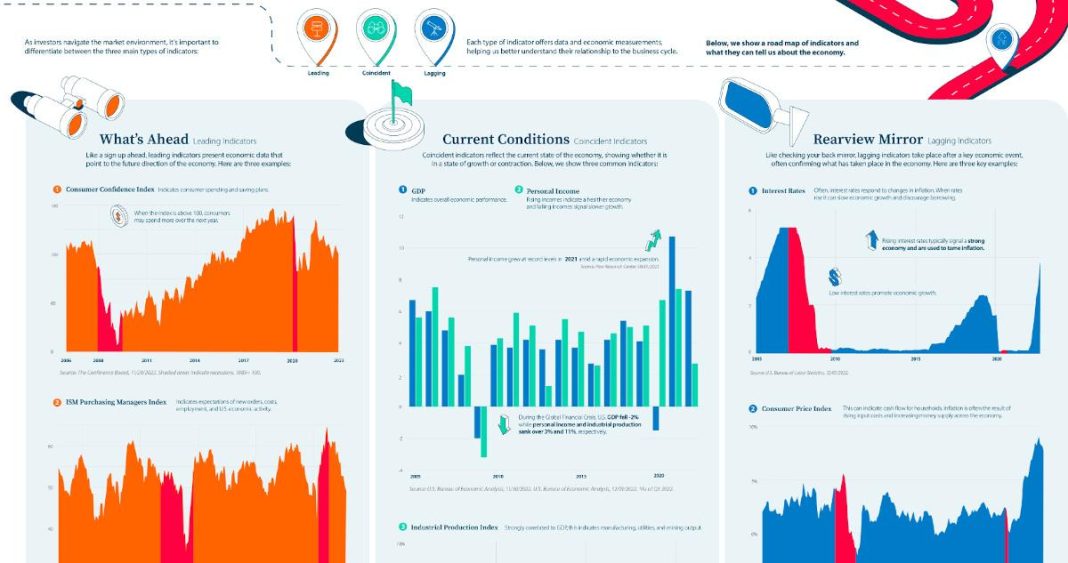In the intricate tapestry of global finance, where the threads of opportunity and risk are woven together, credit risk management emerges as both an art and a science. At the heart of this discipline lies a set of powerful tools—key economic indicators—that serve as the compass guiding financial institutions through turbulent economic seas. As we embark on this exploration, we will delve into the vital signals that illuminate the path ahead, enabling credit risk managers to anticipate challenges and seize opportunities with precision. With an authoritative lens, this article will unravel the complexities of these indicators, offering insights into their pivotal role in safeguarding financial stability and fostering informed decision-making in an ever-evolving economic landscape.
Decoding the Economic Pulse Essential Indicators for Credit Risk Assessment
Understanding the heartbeat of an economy is crucial for effective credit risk management. At the forefront of this endeavor are several essential indicators that provide insights into the financial landscape. These indicators serve as vital signs, offering a glimpse into the economic health and potential risks that may affect credit portfolios. Key among these are:
- Gross Domestic Product (GDP) Growth: A robust GDP growth rate often signals a healthy economy, which can reduce credit risk. Conversely, stagnation or decline may indicate economic stress, increasing the likelihood of defaults.
- Unemployment Rate: High unemployment can lead to increased credit risk as individuals struggle to meet financial obligations. Monitoring employment trends can help anticipate potential credit challenges.
- Inflation Rate: Rising inflation can erode purchasing power and impact borrowers’ ability to repay loans. Keeping an eye on inflation trends is essential for adjusting credit risk strategies.
- Interest Rates: Central bank policies on interest rates can influence borrowing costs and consumer spending. Understanding these trends can aid in predicting shifts in credit demand and risk levels.
These indicators, when analyzed collectively, provide a comprehensive picture of the economic environment, enabling financial institutions to make informed decisions and mitigate potential risks effectively.

Navigating Financial Currents Analyzing Market Trends for Risk Mitigation
In the intricate dance of global finance, understanding the rhythm of economic indicators is crucial for effective credit risk management. Key indicators such as GDP growth rates, unemployment figures, and inflation rates serve as the pulse of economic health, guiding lenders in their risk assessment strategies. A robust GDP growth rate signals economic vitality, suggesting lower default risks, while rising unemployment may hint at potential borrower distress. Inflation, often a double-edged sword, can erode purchasing power, impacting both consumer confidence and repayment capabilities.
Moreover, financial institutions should keep a keen eye on interest rate trends and consumer confidence indices. Fluctuating interest rates can significantly alter borrowing costs, influencing both the supply and demand for credit. Meanwhile, consumer confidence indices provide insights into spending behaviors, which can affect loan performance. By weaving these indicators into a comprehensive risk assessment framework, lenders can not only anticipate potential pitfalls but also seize opportunities to optimize their credit portfolios. The art of navigating these financial currents lies in the ability to interpret these signals with precision and foresight.
Strategic Insights Leveraging Data for Proactive Credit Management
In the realm of credit risk management, harnessing the power of data to anticipate and mitigate potential pitfalls is no longer optional—it’s imperative. Strategic insights derived from data analytics enable financial institutions to stay ahead of the curve by identifying key economic indicators that signal shifts in credit risk. By focusing on these indicators, institutions can proactively adjust their credit strategies to safeguard their portfolios.
Consider the following pivotal economic indicators that are essential for a robust credit risk management framework:
- Interest Rates: Fluctuations in interest rates can significantly impact borrowing costs and repayment capabilities. Monitoring these changes allows for timely adjustments in credit policies.
- Unemployment Rates: Rising unemployment can lead to increased defaults. Keeping a close eye on employment trends helps in assessing the potential risk of non-payment.
- Consumer Confidence Index: This indicator reflects the economic optimism of consumers. A declining index may suggest reduced spending and potential credit risks.
- Inflation Rates: High inflation can erode purchasing power, affecting borrowers’ ability to meet their financial obligations.
By leveraging these insights, financial institutions can not only anticipate risks but also seize opportunities to enhance their credit management strategies.
Crafting a Resilient Portfolio Recommendations for Optimizing Risk Strategies
In the ever-evolving landscape of financial markets, the ability to craft a resilient portfolio hinges on the strategic integration of key economic indicators. These indicators serve as the compass guiding credit risk management, providing insights that are critical for optimizing risk strategies. Interest rates stand at the forefront, influencing borrowing costs and investment returns. As central banks adjust these rates, portfolio managers must remain vigilant, recalibrating their strategies to maintain a balance between risk and reward.
Additionally, the unemployment rate serves as a vital gauge of economic health, impacting consumer spending and default probabilities. A rising unemployment rate may signal economic distress, prompting a reassessment of credit exposures. Furthermore, inflation rates play a pivotal role in shaping purchasing power and interest rate expectations. High inflation can erode fixed income returns, necessitating a proactive approach to asset allocation. To enhance portfolio resilience, consider the following strategies:
- Diversification: Spread investments across various asset classes to mitigate risk.
- Stress Testing: Regularly evaluate portfolio performance under different economic scenarios.
- Liquidity Management: Ensure adequate liquidity to navigate market fluctuations.
- Monitoring Economic Indicators: Stay informed on global economic trends and adjust strategies accordingly.
By leveraging these indicators and strategies, investors can craft portfolios that not only withstand economic turbulence but also capitalize on emerging opportunities.





